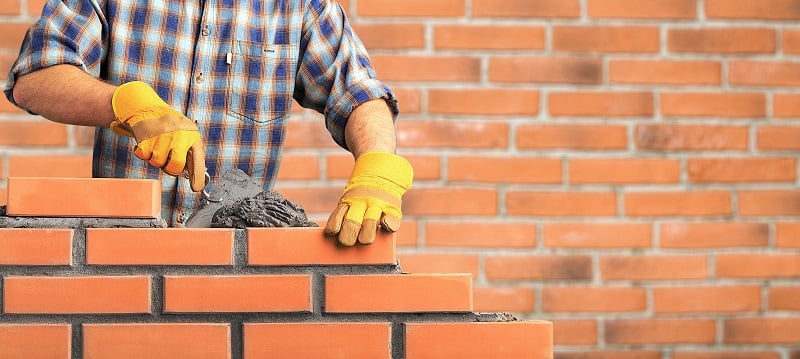Set Up a Chimney Sweep Today for a Clean and Safe Fire Place
Set Up a Chimney Sweep Today for a Clean and Safe Fire Place
Blog Article
Unlocking the Tricks of Sustainable Stonework Building Practices for Eco-Friendly Buildings
In the world of contemporary building, the search of lasting methods has actually come to be critical. Among the myriad techniques to green structure, lasting stonework construction sticks out as a reliable and resilient technique that holds a wealth of untapped potential. From the selection of materials to cutting-edge construction techniques, the tricks to attaining sustainability within masonry building and construction are complex and interesting. By checking out the advantages, products, strategies, and future patterns of sustainable masonry, a deeper understanding of how these techniques can form the future of environment-friendly structures arises.
Benefits of Sustainable Stonework Construction
Welcoming sustainable stonework construction practices not only decreases environmental influence however also uses long-term economic advantages to building contractors and communities. By making use of materials like recycled bricks, obstructs, and stones, builders can substantially decrease the carbon impact of their tasks while advertising resource effectiveness. Furthermore, sustainable stonework building and construction techniques, such as appropriate insulation and thermal mass buildings, can boost power performance within structures, resulting in reduced operational prices in time.
Additionally, the longevity and strength of masonry frameworks add to lasting economic benefits. Structures built making use of lasting stonework methods usually call for less repair and maintenance, converting to set you back savings for contractors and property owners. The longevity of masonry products likewise ensures that frameworks stay steady and safe, reducing the demand for frequent restorations or substitutes.
Eco-Friendly Stonework Products
Making use of environmentally friendly stonework materials is a critical step towards enhancing the sustainability of building and construction methods and decreasing ecological impact while taking full advantage of long-term financial advantages. Lasting masonry materials are sourced, generated, and used in a fashion that reduces general ecological impact. Products such as recycled blocks, redeemed stone, and lasting concrete blocks are ending up being progressively popular choices for eco-conscious builders. Recycled blocks, as an example, not just divert waste from garbage dumps yet also need much less power to generate compared to new blocks. Redeemed stone offers an unique aesthetic allure while decreasing the demand for brand-new quarrying. Sustainable concrete obstructs integrate recycled accumulations and might feature enhanced insulation properties, adding to energy efficiency in structures.
Additionally, natural materials like adobe, rammed planet, and straw bundles offer superb thermal mass properties, reducing the need for heating and cooling down power. These materials are frequently in your area available, advertising local economic climates and lowering transportation-related carbon discharges. By picking eco-friendly stonework materials, building and construction jobs can substantially reduce their ecological impact and contribute to the development of healthier, more lasting developed atmospheres.
Energy-Efficient Stonework Methods
Energy efficiency plays an essential duty in boosting the sustainability of masonry building techniques. By applying energy-efficient masonry techniques, builders can substantially minimize the total power usage of a structure, bring about reduced functional prices and a smaller environmental impact. One crucial energy-efficient masonry method is the usage of thermal mass, which includes including dense products like concrete or block right into the building's framework to absorb and save warmth. This helps regulate indoor temperature levels, decreasing the need for mechanical home heating and cooling systems.

Technologies in Lasting Masonry
Current developments in sustainable stonework practices have brought around ingenious techniques that are improving the building industry. One such innovation is the development of self-healing concrete, which utilizes germs installed within the concrete to heal fractures autonomously. This development not only minimizes upkeep prices but also improves the durability of masonry frameworks, contributing to their sustainability.
An additional noteworthy innovation is the usage of recycled accumulations in stonework building and construction - masonry contractor. By incorporating materials such as crushed ceramic waste or recycled glass into concrete mixes, building contractors can decrease the ecological influence of building and construction tasks while keeping architectural honesty. This method not only diverts waste from landfills yet likewise preserves all-natural resources, making it a crucial improvement in sustainable masonry building and construction
Furthermore, the combination this article of digital design tools, such as Building Information Modeling (BIM), is transforming the way masonry frameworks are prepared and created. BIM permits more specific calculations, lowered material waste, and enhanced power performance, eventually resulting in even more sustainable building methods. These advancements collectively represent an encouraging future for sustainable stonework building in the era of epoxy stamped concrete green buildings.
Future Trends in Masonry Sustainability
With the ingenious strides made in lasting masonry methods, the future trends in stonework sustainability are poised to further revolutionize the building sector. Among the key patterns shaping the future of stonework sustainability is the raised assimilation of technology. Developments such as Building Details Modeling (BIM) and online fact simulations are being utilized to enhance masonry construction procedures, bring about minimized material waste and enhanced energy performance in buildings.
Moreover, the development of unique lasting materials is readied to play a significant duty in enhancing the eco-friendliness of masonry building. masonry contractor. Innovations like self-healing concrete, recycled aggregates, and bio-based binders are getting grip for their capacity to reduce ecological influence while keeping architectural stability

Final Thought
In final thought, sustainable masonry building and construction techniques supply many advantages for environment-friendly structures. masonry contractor. Innovations in lasting stonework are continually being developed to further boost the ecological efficiency of buildings.
Report this page